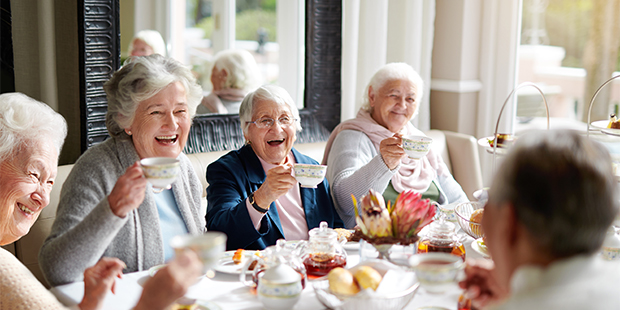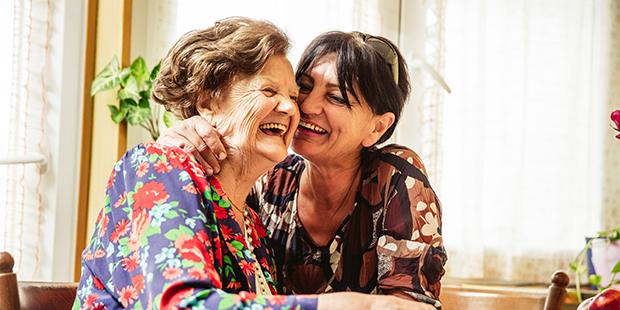Elderly relatives can cause "panic"
People need to plan ahead to help an elderly parent or relative needing rest home care.

Increasing numbers of elderly Kiwis facing deteriorating health are being forced to turn to the government for help in paying for rest home care.
Ministry of Health (MoH) figures show that in 2016-17 alone, the government provided $966 million to assist 26,100 older New Zealanders in care.
Although the government expects people who can afford to do so to contribute to their own care - including using assets such as their homes - once these funds whittle down to $230,495 (the current threshold set by the government), they may be eligible for help.
However, industry experts believe many New Zealanders are either unaware they can apply for a government subsidy (known as a residential care subsidy) or leave it to the last minute to do something about it.
Jane Smart, chief operating officer of specialist health and aged care provider Radius Care, says families need to prepare earlier to help an elderly parent or relative enter the later stages of their life “otherwise it’s a panic zone”.
She says when families are suddenly faced with a struggling parent, it can be daunting: “It is not easy to traverse the system and is a hard conversation to have. But it is important they have it while the person is cognisant and able otherwise they (family members) may impose their own thinking on the matter.
“It can be scary and when something like this suddenly hits, families can react emotionally,” Smart says.
The subsidy, administered by the MSD and funded through the Ministry of Health (MoH), is available to seniors who need long-term residential care in a hospital or rest home but who don’t have the income to fund it.
The money is paid directly to the rest home or hospital by the MoH. The level of subsidy is determined following an income assessment and is calculated as the difference between the cost of care and what is able to be contributed by the individual.
It covers stay in rest homes, long-term care in a hospital, dementia care and psycho-geriatric care and is designed to assist those with “high” or “very high” needs which cannot be safely accommodated by carers (often other family members) at home.
Smart says the number of elderly people needing this type of care is increasing and believes many are not being assessed for their eligibility quickly enough: “We always do our best to help in these situations, but it is incumbent on the families to initiate an application for an assessment; we can’t apply for them.
“People need to get on to it, they can’t just leave it,” she says. “It is best to do so before they reach the stage were they are worried; they may have an aged mother who’s not coping well and perhaps has had a fall, that sort of thing.
“At these times people need a partner and Radius can offer that; we know the system, can support people through the process and provide a listening ear.”
Radius is a New Zealand owned and operated company providing rest home and private hospital care in 22 locations across the country. Smart says most of its 1700 residents are receiving a residential care subsidy.
To be assessed for a subsidy, people over 65 must first meet an asset threshold set by the government. At present, that figure is $230,495.
If their assets are worth more than this (most houses are valued higher) then the subsidy is not payable – meaning many will decide to sell their home. The proceeds go towards care but, once that threshold of $230,495 is reached, the state can bear the full cost of care and that money remains with the person in aged residential care – to be used for an inheritance or other purposes.
An income assessment is also carried out and can involve New Zealand superannuation, contributions from relatives, earning from interest and bank accounts, investments or income from a business or job. Money earned by a partner through work is not counted as income.
For those receiving New Zealand superannuation (and a Veteran’s Pension or any other benefit), most of this income will go towards their care. However people get to keep a personal allowance of $45.28 a week and receive a clothing allowance of $283.97 a year.
Services covered by the subsidy include accommodation, food, laundry, nursing, visits to a GP, prescribed medication and transport to health services. Among those not covered are ‘premium’ rooms, visits to a specialist not publicly funded, transport to social events, and the cost of private phones, newspapers, books, magazines and personal toiletries.
Smart says the subsidy will cover the cost of a standard room and if people wish to upgrade their accommodation at Radius this will typically cost an additional $15 to $20 a day which must be paid for privately.
Age Concern, the New Zealand charitable organisation which promotes the rights, wellbeing and quality of life for those aged over 65, recommends everyone at this age appoint a person as an Enduring Power of Attorney before moving into a rest home to, if necessary, manage their affairs and make decisions on their behalf.
It also recommends people shop around when considering a rest home and says a list is available either from a local Age Concern, the District Health Board or a NASC.
There is a deep-seated social conundrum poised to affect our elderly: how do we fit hundreds of thousands of people who will need aged residential care into only tens of thousands of beds?
It’s a problem the rest home industry says is already hitting home – and which, if not solved, will sentence increasing numbers of frail, elderly people to a lonely death at home.
The numbers, say Brien Cree, the managing director and founder of Radius (22 aged care facilities around New Zealand), don’t lie. There are about 39,000 beds in the country – beds for frail elderly who need medical treatment and/or nursing help.
However, our ageing population is set to mushroom spectacularly. Our population as of June 2018 was 4.8m. The latest figures for those aged 65-plus come from 2016: 700,000. Those 85-plus at 2016: 83,000. Fast forward to 2048 and the numbers of 65-plus are forecast to swell to 1.4m, with those 85 and over are predicted to hit up to 315,000, according to research from the New Zealand Aged Care Association (NZACA).
So those 39,000 beds are going to be in demand, particularly, says Cree, if the current shortage of new facilities by the aged care industry continues. The NZACA has forecast there will only be 52,000 beds by 2026.
Reports late last year noted there were 81 retirement villages being built, seeking consent or being planned. That figure of 39,000 beds does not include retirement villages – but they often have more to do with property development and retirement lifestyles than aged care, says Cree.
“Many have some aged care facilities but not very many beds,” he says. “They tend to use care as a marketing tool; an incentive to buy into a retirement village that many people think will be their last move. If their health starts to fail, many will have to shift to a facility like Radius – but the bottom line is that, unless you have additional funds, it is very difficult to move out of a retirement village.”
It’s difficult to plan ahead, he says, as most people want to stay home, but families should try to do so as much as possible for the sake of their elderly relatives, because of the current shortages.
Projected Population and Aged Residential Care Residents*

*Source: Statistics NZ population projections by age, NZACA projections of Aged Residential Care residents based on TAS Quarterly Bed Survey and Aged Care Demand Planner and Statistics NZ population projections
So why is the aged care industry not building more facilities to cater for this wave of elderly? Cree says they simply can’t afford it: “Funding in this sector is so low that existing operators can continue to exist – just – but the margins are low; the returns aren’t sufficient and the funding just doesn’t exist to build care facilities, as opposed to retirement villages.
“We have been lobbying successive governments about this for years but nothing is being done.”
Part of the problem is reports of over 80 retirement villages on the way tend to mask the situation, suggesting the wave of increasing elderly will be comfortably contained on welcoming shores.
“But those retirement villages don’t cater for the vast majority of 65-85 year-olds who have become frail and can’t look after themselves,” says Cree, “or the 85-plus age group who have a higher percentage of people who need care.”
NZACA chief executive Simon Wallace says New Zealand’s property boom has made the cost of land and development difficult for not-for-profit, religious, welfare and charity operators. Retirement villages were able to “cross-subsidise” their smaller care facilities through the cost of the units sold.
Residential aged care facilities do not sell units; most people needing care are on government subsidies – many sell their homes to pay for their care until their assets reach the $230,000 threshold which means the state can pay from that point if they are within income and asset limits.
Cree cites his own mother’s experience – in a wheelchair after a stroke, she was in care for 17 years – as an example of the long-term care many people need: “The reality is that a lot of people need ongoing care. The DHBs do critical care really well – but they are not geared up for long-term care and no one has any more beds. There is a massive shortage.”
“The Northland DHB has 700 people waiting to be assessed for care. They normally have seven needs assessors to do that job. Now they have only two – and they will be stressed out trying to get round 700 people when they can only do about two a day.”
Wallace says the NZACA’s recent report, Caring for our older Kiwis, raised concerns about the ability of many elderly people to access care when they need it. Over half of the country's DHBs are delaying access to rest homes, with potentially serious consequences for their health.
That’s led to what Wallace calls “postcode care” by DHBs, as evidenced in the NZACA report, meaning the ability of elderly to access residential care varies according to where they lived.
It showed that, out of the 21 DHBs, the best admission rate for people in most need of care was only 54.1 per cent (Waitemata DHB), with Bay of Plenty (29.6 per cent) and West Coast (28 per cent) the worst. Only 10 DHBs had an admission rate of better than 40 per cent.
In terms of months taken to get into a residential care bed, it took those people most in need of care an average of 2.1 months (if they lived in the Waitemata DHB area) or 9.7 months if they lived in Hawkes Bay. Only 8 DHBs had waiting times of less than four months.
Cree: “People need to have confidence that we are there and the system is there – only the system isn’t really there and we are facing a future that doesn’t look good.”
For more information visit Radius Care.








